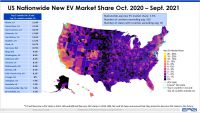Difference between revisions of "Welcome to Electric Transportation Wiki"
| Line 51: | Line 51: | ||
|- | |- | ||
|<div style="text-align:center;"><span class="plainlinks"><font color="002bb8"><strong>Research Results and Supplemental Projects</strong></font></span></div> | |<div style="text-align:center;"><span class="plainlinks"><font color="002bb8"><strong>[http://dcx-webwik-p01.epri.com:1008/Research_Results_and_Supplemental_Projects Research Results and Supplemental Projects]</strong></font></span></div> | ||
| | | | ||
| | | | ||
Revision as of 12:12, 10 January 2022
Welcome to the main page of the Electric Power Research Institute's Electric Transportation Wiki, a wiki-style hub for Electric Transportation research at EPRI.
Electric Transportation falls under the Electrification and Customer Solutions section of the Electric Power Research Institute's (EPRI) Power Delivery & Utilization sector, which, "provides transmission, distribution, and end use R&D to guide utilities and stakeholders toward a safe, secure, resilient, affordable, reliable and environmentally responsible, integrated grid."
EPRI is a non-profit organization. Find out more about EPRI's history and business here.
Current and Planned Electric Transportation Wiki Content
| Content | Description | Access |
|---|---|---|
Utility Programs Database
|
||
Publicly Available Tools
|
||
Electric Transportation Roadmap: Vision for ...
|
||
Electric Transportation Case Studies
|
||
EV Consumer Guides
|
||
Newsletters
|
||
Electric Transportation Working Groups |
||
About Us
|
EPRI's Comprehensive Electric Transportation Expertise
The experts in EPRI's Electric Transportation program conduct in-depth research on these and other critical issues. EPRI's comprehensive research, data, and tools can help utilities expedite actions to achieve their EV-related goals—whether they have recently started engaging with the EV market or are long-time market participants.
The program also gathers key insights through its collaboration among utilities, automakers, charging infrastructure companies, and other major national and international EV industry stakeholders. Utilities can use EPRI's comprehensive suite of resources to help them serve as their customers' trusted EV advisors, and to inform their short- and long-term investment decisions to help enable reliable, safe, affordable, and environmentally responsible electricity.
Please contact us with any questions about our research.
Approach [MOVE TO ABOUT US / RENAME "OUR PROGRAM" OR SIMILAR]
The Electric Transportation program utilizes several approaches to advance research in the rapidly changing landscape:
| Subject | Approach | Accomplishments | Current Year Activities |
|---|---|---|---|
Utility Customers
|
|
|
|
Thought Leadership on Markets and Technology
|
|
|
|
Research, Development, Testing, and Collaborative Demonstrations
|
|
|
|
Leadership on Informing Standards
|
|
|
|
Tools and Analyses to Enable Market Transformation
|
|
|
|
Research Results and Supplemental Projects MOVE TO ABOUT US
The research conducted in the Electric Transportation program holds value to both its utility customers and industry stakeholders as well as to the public. Potential benefits include:
Value to Utilities and Other EV Industry Stakeholders
- Greater understanding of EV-related customer preferences and behaviors to inform the design of effective utility EV programs
- Deeper knowledge of local and regional EV markets to inform the design of effective utility EV programs
- Improved understanding of national and global EV markets, technologies, and trends to inform utilities as they design effective EV programs and adapt their systems and operations to EVs
- Greater understanding of the potential benefits of EVs for the environment, grid operations, customers, and society
- Deeper utility engagement with key EV stakeholders nationally and globally, including automakers, equipment manufacturers, charging station operators, national laboratories, and regulators
- Enhanced ability to anticipate grid impacts of EVs and to provide reliable grid infrastructure that can support charging needs of light-, medium-, and heavy-duty EVs
- Smarter management of charging to enable smooth grid integration of EVs
- Greater understanding of the performance, durability, reliability, and operational costs of EVs and their components
- Enhanced ability to advance and refine various light-, medium-, and heavy-duty electric transportation technologies
- Increased knowledge to address technical challenges, inform standards, and enhance safety and reliability of electric transportation and grid infrastructure
- Enhanced standards and equipment interoperability, which can enable EV adoption
- Reduced uncertainty and costs associated with large-scale deployment of EVs and related infrastructure
Value to the Public
- Reduced greenhouse gas emissions and improved air quality as a result of widespread EV adoption
- Enhanced grid reliability and safety and lower electricity costs as a result of effective integration of EVs
- More customer choice regarding energy use, technology adoption, and charging infrastructure
- Greater awareness and understanding of EV technologies and applications
Types of Research
The Electric Transportation program conducts two types of research. Those conducted as a part of EPRI's Annual Research Portfolio (ARP) are Research Results and are either Base Funded (through program funding) or Supplemental. Supplemental Projects are research, development or demonstration projects offered outside of the annual research portfolio.

